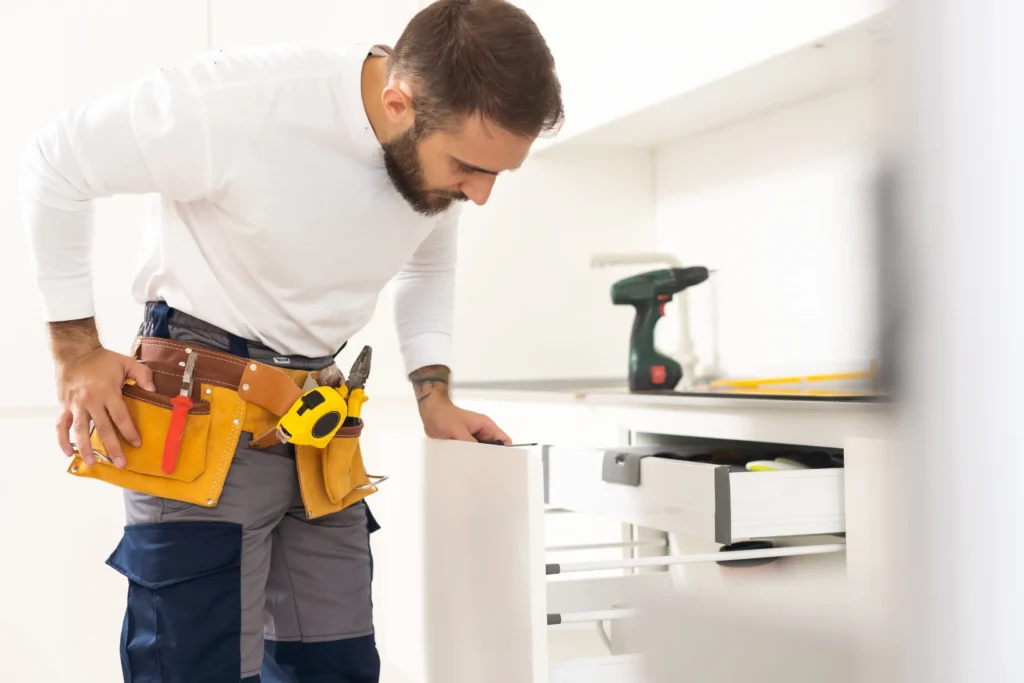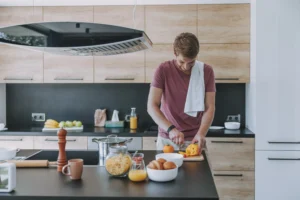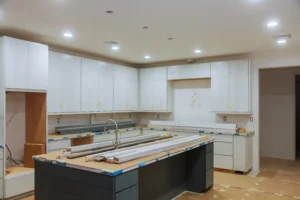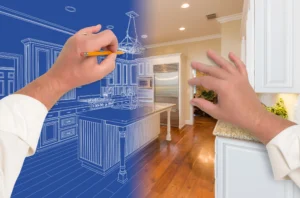Kitchen cabinet material is a critical aspect to consider when upgrading a kitchen.
It is crucial since it lays the foundation for these critical storage units’ operation and aesthetic allure.
Deciding what material to use has always been daunting for most homeowners, which is why this article offers various options for your consideration.
Familiarizing with the Various Materials
Exploring the various material types forms the foundation of an informed choice amongst the wide array. From particleboard, PVC, plywood, MDF, stainless steel, and solid wood, one can never exhaust the diverse realm of cupboard materials. Let us now delve into a few examples of these options one should try for their kitchen cupboard needs:

Kitchen cabinets installation
Solid Wood
This is an ideal pick for people who are aiming to achieve or have a traditional style not just in the culinary area but the entire home. The textured grain appearance of wood invokes an elegant and classic look and feel that characterizes the American farmhouse and Mediterranean home styles. In terms of cost, wood comes third in terms of stainless steel and plywood. On the flip side, wood is not a very good option for heavily humid kitchens due to warping. However, this limitation can be overcome by sealing it with a resistance finish.
Plywood
Given its sturdier and increased weight, versatility, and performance under kitchen elements, ranks top of the list of the costliest cabinet materials. It is crafted from wood veneers that have been stacked on top of each other and pressed using highly pressurized heat. However, it makes the best upper cabinet shutters.
MDF
For people aiming to achieve some level of sophistication under a tight budget, MDF is their go-to -choice since it is a little cheaper. It is studier, averagely heavy, and performs well under kitchen elements, making it a great candidate for humid and hot kitchens. It also allows versatility since it exists in an array of finishes and styles.
Particleboard
Particleboard is the least preferred cabinet material, given its lightweight and poor performance under kitchen elements. However, particleboard is still a great candidate for light kitchens where humidity and heat levels are low. It also presents versatility since it exists in a spectrum of finishes that match any home style. The main advantage of particleboard lies in its suitability for both the base and overhead cabinets, given its average weight.
Stainless Steel
Stainless steel makes up for a recent and upcoming trend that sprang up in the post-pandemic years. Stainless offers advantages of both worlds; high performance and durability, hence its increased cost compared to most cupboard materials. From polished, textured, or natural finish that develops a patina after some time, stainless steel has a sleek concept that sparks an elegant contemporary kitchen style. Its high performance and ease of upkeep render it a good candidate for humid, hot, busy kitchens like in hotels.
Key Considerations
Below are the critical considerations to make during cabinet material selection for your culinary room.
Budget
Together with other factors, the pick of a cupboard material will surely come down to the budget size you have established for the upgrades. Laminate, particleboard, and MDF are more forgiving while others like stainless steel or plywood will require a considerably bigger budget.
Style
Whichever material type one settles for their home cupboard needs, it has to conform to the prevailing room and the entire house style. The likes of MDF and stainless steel make up great candidates for contemporary house styles while some including solid wood make up a great pick for traditional house styles.
Durability
Coming down to performance under increased levels of kitchen pollutants, durability becomes a key aspect. For better performance, plywood and stainless steel make up sound options to explore. However, due to pollutants and abrasions, stainless steel will call for periodic upkeep like cleaning, to bring it back to its initial glory.
Maintenance
Different cupboard materials come with different maintenance needs. For example, solid wood and stainless steel will call for more upkeep in the form of cleaning to remove visible pollutants and abrasions that are prevalent in busy, hot, and humid industrial kitchens like hotels. Plywood and MDF require little to no maintenance, making them great candidates for home kitchen cabinets.
The right cupboard material comes down to the room style, budget size, upkeep, and durability. Weighing these factors considered carefully, you can settle for a concept that speaks your style while achieving performance and durability in your culinary area.




